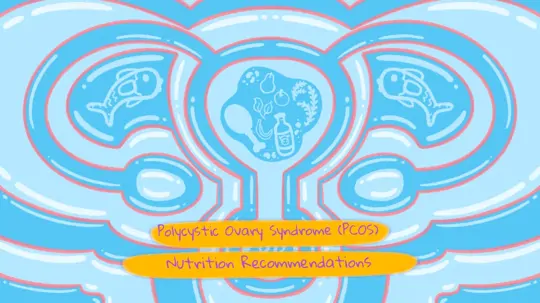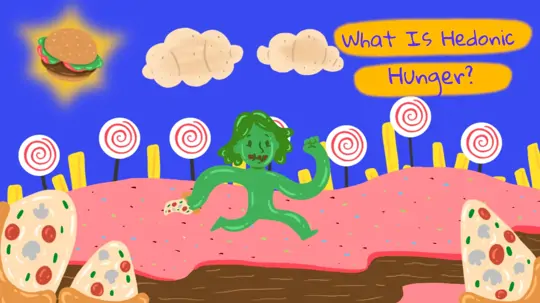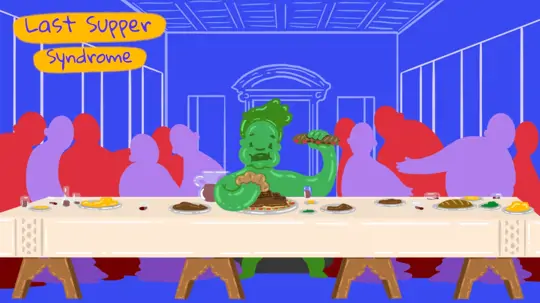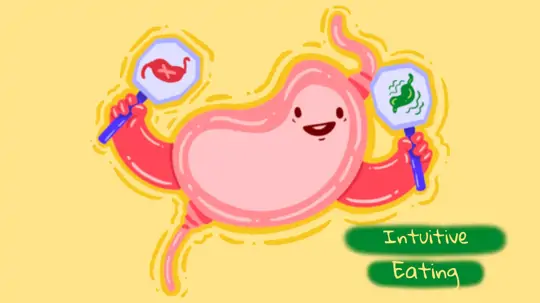
Start feeling better today!
Connect with your therapist today and take control of your life like our 850.000 happy clients.
Get StartedWhat is Autism Spectrum Disorder?
Autism spectrum disorder is a long-term neurodevelopmental disorder with a strong genetic component that manifests in childhood and is characterized by a lack of social communication and the repetition of an unusual set of sensory-motor behaviors.
The term "autism spectrum disorder" refers to the wide range of symptoms that it exhibits, ranging from mild to severe.
Even if individuals on the spectrum have very different levels of discomfort, this syndrome occurs regardless of ethnic origin, religious belief, or socioeconomic level1. As previously stated, the two most basic symptoms of autism spectrum disorder are limited and repetitive sensory-motor behaviors, as well as limited social communication.
What are the Symptoms of Autism Spectrum Disorder? (DSM-5 Criteria)
The Diagnostic and Statistical Manual of Mental Disorders (DSM) has discussed autism spectrum disorder in order to identify it as a psychological disorder, distinguish it from other disorders, and provide appropriate treatment.
Apart from these two key symptoms, the symptoms must begin in childhood and have a significant impact on functioning in order to be classified as an autism spectrum disorder2.
To begin the discussion of affecting functionality, consider how this condition negatively affects the person's daily life, work life, and social relationships and causes deterioration.
Lack of Social Interaction
People on the autism spectrum are less emotionally involved in society2. They struggle on a specific spectrum in areas where they are deficient, such as emotional and social issues. It can be exhibited in various ways, such as not being able to communicate with one another, not sharing one's interests or feelings, not sharing social interaction, or not being able to engage in social interaction.
Individuals with autism may struggle with verbal and nonverbal communication skills2. These symptoms are also present within a certain range, as the name of the autism spectrum suggests. They may exhibit characteristics such as an inability to communicate verbally or nonverbally; an abnormality in communicating through eye contact and body language; an inability to understand and use gestures; a complete lack of or deficiency in gestures and facial expressions; and little or no communication.< /p>
Individuals on the autism spectrum may struggle with establishing and maintaining relationships, as well as understanding them2. Relationship-building behaviors are also within a certain spectrum. They may, for example, lack the ability to change and adjust their behaviors to better fit different social environments, be unable to make friends or have difficulty making them, and show no interest in their peers.
Limited and Repetitive Behaviors
People with autism spectrum disorder may exhibit stereotypical and repetitive behaviors2. Children, for example, may line up their toys, shake their hands or arms repeatedly, involuntarily repeat what others say, or develop and remember a unique way of speaking.
The disorder's characteristics include avoiding similar behavior in other people and displaying their own ritual gestures or speech2. For example, they may become extremely uncomfortable if the environment changes even slightly; they may have difficulty transitioning from one game to another or the next phase in a task, and they may repeat that phase over and over. Because they are having difficulty changing their routine or transitioning to a new situation, they may want to eat the same food, wear the same clothes, or walk the same way every day.
In addition to these characteristics, people with autism may have limited interests and behaviors2. They usually do not change their interests and stick to one topic. For example, they may become overly attached to an object or task and become obsessively interested in it.
Individuals with autism prefer a more stable and limited environment because they have limited interests and behaviors, which allows them to adapt more easily. As a result, they exhibit unusual reactions to external sensory stimuli2.
They may react slowly as if they do not perceive, or they may react quickly as if they are more uncomfortable than usual. They may, for example, ignore a painful stimulus or a temperature that is different from normal, or they may react negatively to a specific and different sound.
How is Autism Spectrum Disorder Diagnosed?
It is critical to consider the opinions of experts and caregivers, as well as internationally reliable and valid scales and tools, in order to diagnose this disorder. Licensed therapists can also use scientific measurement tools and conduct an assessment interview based on the symptoms and observations reported by the family. If the psychiatrist examines all of these evaluations, they will diagnose autism spectrum disorder.
A diagnosed individual can thus be directed to the right treatment and education. It is critical to begin this process as soon as possible because research shows that early interventions, both in terms of education and treatment, facilitate further progress3. As a result, if there is any doubt about the child's development or behavior, doctors should be consulted as soon as possible.
The Importance of Early Diagnosis
A study found that children who have a sibling are more likely to be diagnosed than children who do not have a consistent caregiver. Furthermore, the fact that these children communicate with one another and with their older siblings was identified as a factor that increases the rate of early diagnosis. Moreover, studies have shown that children with younger siblings who are close in age are more likely to receive a late diagnosis4.
Because a diagnosis of autism spectrum disorder in adolescence or adulthood can have a variety of social, cultural, and economic implications, the delayed process may affect the difficulty of the situation that individuals face.
What is more, people who are not diagnosed until adolescence or adulthood may develop mental conditions such as Attention Deficit Hyperactivity Disorder (ADHD), Anxiety Disorders, and Mood Disorders later in life, further complicating the situation1. From this perspective, it is logical to emphasize the significance of early diagnosis in autism spectrum disorder.
How Can I Know If My Child Has Autism?
Paying attention to some early warning signs while monitoring children's language and social skills development can help determine whether a child is on the spectrum. Language and social skills of healthy children have advanced significantly by the sixth month. Babies, for example, begin to respond to their caregivers' smiles at 6 months and can now produce phrases of two to three words by the age of two. The following developmental stages are expected to have occurred by the right time and may indicate that children have autism spectrum disorder:
- At 6 months: They can respond to the happy facial expressions of caregivers.
- At 9 months: They can imitate facial expressions and reflect the sounds they hear.
- At 1 year: They can make incomprehensible sounds and mumble.
- At 16 months: They can make hand gestures and say a word.
- At 18 months: They can engage in role-playing activities.
- At 2 years: They can form meaningful phrases using more than one word.
Parents should monitor their babies' linguistic and social development and visit their doctor if there are any delays.
What are the Treatment Options for Autism Spectrum Disorder?
The amount and type of assistance available to children and adults with autism spectrum disorder varies greatly among countries and regions around the world.5. According to research, children on the autism spectrum from low-income and low-education families benefit less from treatments.6. When it comes to autism spectrum disorder, it's critical to educate and guide families because the family's approach is just as important as diagnosis, treatment, and education.1, 7.
In addition to informing the family, there are caregiver interventions, behavioral interventions, and social skills training to manage the child-family interaction.1. Studies demonstrate the following findings:
- High-intensity applied behavior analysis helps young children develop cognitive functioning and language skills.8.
- When applied for an average of 20 to 40 hours per week for several years, early intensive behavioral intervention provides significant benefit for basic autism spectrum disorder symptoms, particularly communication skills.9.
- Social skills training delivered in a group setting improves the social behaviors of adolescents with autism spectrum disorder.10
Advice for Families with Autistic Children
If your child is on the autism spectrum, the most important step in dealing with it is to conduct extensive research and learn as much as possible about it. You will be better prepared for problems that your child or you may face as you research and learn.
You will get to know your child better this way, and you will learn about the characteristics that distinguish them from their peers on the spectrum. You can explore new perspectives and skills, as well as your child's neurodiversity and life-complicating traits. You may be tired some days, but when you hug your child, you will think to yourself, "It was worth it." Here are some tips for parents who want to learn how to better care for their autistic children:
- Create a stable order in your child's life with clear boundaries.
- Create a safe and quiet space for your child at home.
- Communicate with your child often.
- Use non-verbal forms of communication often, such as facial expressions and gestures.
- Pay attention to your child in moments of anger.
- Consider your child's sensitivities.
- Understand how your child learns best and support them.
- Divide the big tasks your child has to do into small parts.
- Get involved in autism parent support groups.
- Get professional psychological support for yourself.
Being the parent of a child on the spectrum and constantly trying to provide the best care for them can be psychologically exhausting. You can get individual or couple-family counseling from Hiwell's licensed therapists during this process to keep yourself psychologically healthy and create space for yourself.
Sources
- Lord, C., et al., 2018, Autism Spectrum Disorder, Lancet.
- American Psychiatric Association, 2013, Diagnostic and Statistical Manual of Mental Disorders (DSM-5), American Psychiatric Association Publishing.
- Sanchack, K.E., et al., 2016, Autism Spectrum Disorder: Primary Care Principles, American Family Physician.
- Sicherman, N., et al., 2018, Grandma Knows Best: Family Structure and Age of Diagnosis of Autism Spectrum Disorder, Autism.
- Elsabbagh, M., et al., 2016, Autism and the Social Brain: The First-Year Puzzle. Biological Psychiatry.
- Salomone, E., et al., 2016, Use of Early Intervention for Young Children with Autism Spectrum Disorder Across Europe, Autism.
- Dykens, E.M., et al., 2014, Reducing Distress in Mothers of Children with Autism and Other Disabilities: A Randomized Trial, Pediatrics.
- Tiura, M., et al., 2017, Predictors of Longitudinal ABA Treatment Outcomes for Children with Autism: A Growth Curve Analysis, Research in Developmental Disabilities.
- Reichow, B., et al., 2018, Early Intensive Behavioral Intervention (EIBI) for Young Children with Autism Spectrum Disorders (ASD), Cochrane Database Syst. Rev.
- Frankel, F., et al., 2010, A Randomized Controlled Study of Parent-Assisted Children’s Friendship Training with Children Having Autism Spectrum Disorders, J. Autism Dev. Disorders.





